#Memorial to the Murdered Jews of Europe
Text


Six million Jews murdered. Millions more stripped of their livelihoods, their communities, their families, even their names.
The horrors of the Holocaust are often expressed in numbers that convey the magnitude of Nazi Germany’s attempt to annihilate Europe’s Jews.
The Nazis and their collaborators killed millions of people whom they perceived as inferior—including Jehovah’s Witnesses, gay men, people with disabilities, Slavic and Roma people, and Communists.
However, historians use the term “Holocaust”—also called the Shoah, or “disaster” in Hebrew—to apply strictly to European Jews murdered by the Nazis between 1933 and 1945.
No single statistic can capture the true terror of the systematic killing of a group of human beings—and given its enormity and brutality, the Holocaust is difficult to understand.
How did a democratically elected politician incite an entire nation to genocide? Why did people allow it to happen in plain sight? And why do some still deny it ever happened?


European Jews before the Holocaust
By 1933, about nine million Jews lived across the continent and in every European nation.
Some countries guaranteed Jews equality under the law, which enabled them to become part of the dominant culture.
Others, especially in Eastern Europe, kept Jewish life strictly separate.
Jewish life was flourishing, yet Europe’s Jews also faced a long legacy of discrimination and scapegoating.
Pogroms—violent riots in which Christians terrorized Jews—were common throughout Eastern Europe.
Christians blamed Jews for the death of Jesus, fomented myths of a shadowy cabal that controlled world finances and politics, and claimed Jews brought disease and crime to their communities.
The rise of Adolf Hitler
It would take one man, Adolf Hitler, to turn centuries of casual anti-Semitism into genocide.
Hitler rose to power as leader of the National Socialist German Workers’ Party, also known as the Nazi Party, in the 1920s.
Hitler harnessed a tide of discontent and unrest in Germany, which was slowly rebuilding after losing the First World War.
The nation had collapsed politically and economically, and owed heavy sanctions under the Treaty of Versailles.
The Nazi party blamed Jews for Germany’s troubles and promised to restore the nation to its former glory.
Hitler was democratically elected to the German parliament in 1933, where he was soon appointed as chancellor, the nation’s second-highest position.
Less than a year later, Germany’s president died, and Hitler seized absolute control of the country.

The early Nazi regime
Immediately after coming to power, the Nazis promulgated a variety of laws aimed at excluding Jews from German life—defining Judaism in racial rather than religious terms.
Beginning with an act barring Jews from civil service, they culminated in laws forbidding Jews from German citizenship and intermarriage with non-Jews.
These were not just domestic affairs: Hitler wanted to expand his regime and, in 1939, Germany invaded Poland.
It marked the beginning of the Second World War—and the expansion of the Nazis’ anti-Jewish policies.
German officials swiftly forced hundreds of thousands of Polish Jews into crowded ghettoes, and with the help of locals and the German military, specially trained forces called the Einsatzgruppen began systematically shooting Jews and other people the regime deemed undesirable.
In just nine months, these mobile murder units shot more than half a million people in a “Holocaust by bullets” that would continue throughout the war.
But Hitler and his Nazi officials were not content with discriminatory laws or mass shootings.
By 1942, they agreed to pursue a “final solution” to the existence of European Jews:
They would send the continent’s remaining 11 million Jews east to death camps where they would be forced into labor and ultimately killed.
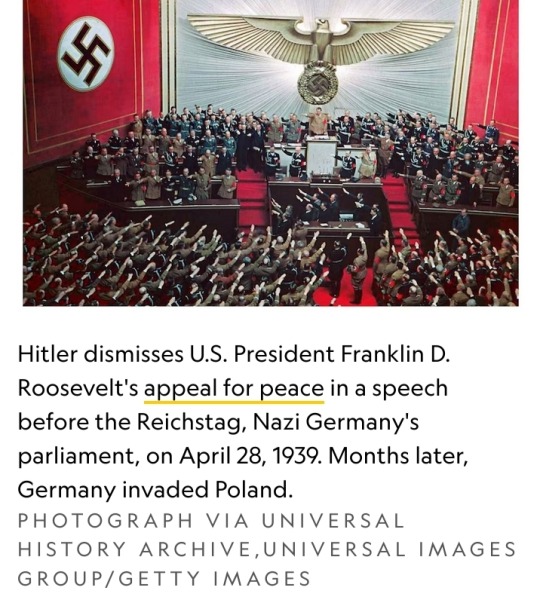
Genocide in plain sight
By characterizing their actions as the “evacuation” of Jews from territories that rightfully belonged to non-Jewish Germans, the Nazi operation took place in plain sight.
Though thousands of non-Jews rescued, hid, or otherwise helped those targeted by the Holocaust, many others stood by indifferently or collaborated with the Nazis.
With the help of local officials and sympathetic civilians, the Nazis rounded up Jews, stripped them of their personal possessions, and imprisoned them in more than 44,000 concentration camps and other incarceration sites across Europe.
Non-Jews were encouraged to betray their Jewish neighbors and move into the homes and businesses they left behind.
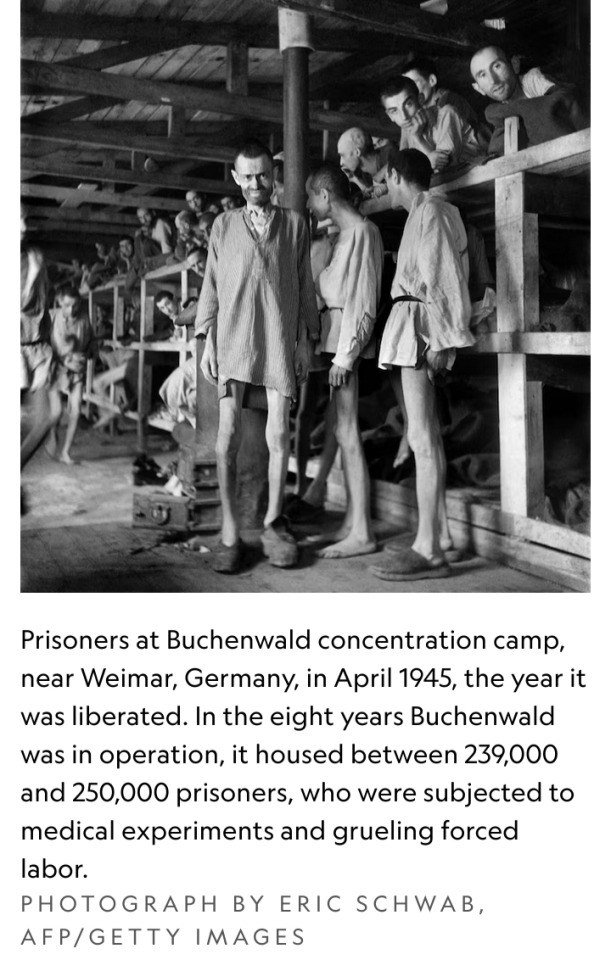
Dachau, which opened near Munich in 1933, was the first concentration camp.
Five others—Auschwitz-Birkenau, Chelmno, Belzec, Sobibor, and Treblinka—were designated as killing centers, where most Jews were immediately murdered upon arrival.
The killings took place in assembly-line fashion:
Mass transports of Jews were unloaded from train cars and “selected” into groups based on sex, age, and perceived fitness.
Those selected for murder were taken to holding areas where they were told to set aside their possessions and undress for “disinfection” or showers.
In reality, they were herded into specially designed killing chambers into which officials pumped lethal carbon monoxide gas or a hydrogen cyanide pesticide called Zyklon B that poisoned its victims within minutes.

Credit: Zyklon B (Wikipedia)
The earliest Holocaust victims were buried in mass graves. Later, in a bid to keep the killings a secret, corpses were burned in large crematoria.
Some Jews were forced to participate in the killings, and then were themselves executed to maintain secrecy.
The victims’ clothing, tooth fillings, possessions, and even hair was stolen by the Nazis.
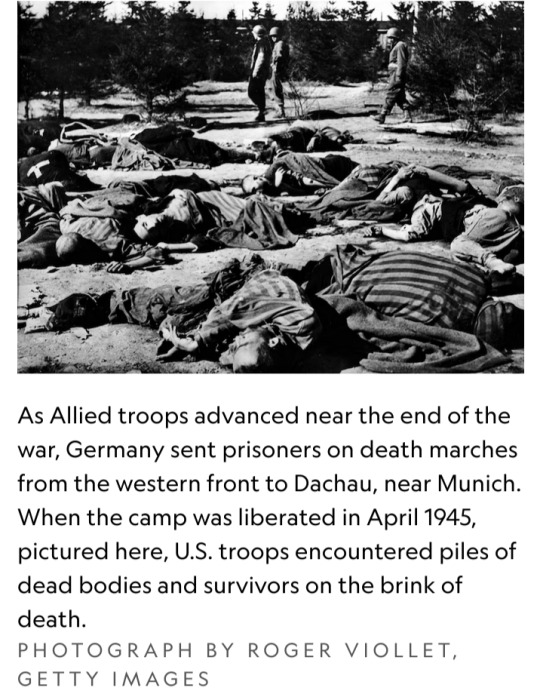
Life in the camps
Those not chosen for death were ritually humiliated and forced to live in squalid conditions.
Many were tattooed with identification numbers and shorn of their hair.
Starvation, overcrowding, overwork, and a lack of sanitation led to rampant disease and mass death in these facilities.
Torture tactics and brutal medical experiments made the camps a horror beyond description.
“It is not possible to sink lower than this; no human condition is more miserable than this, nor could it conceivably be so,” wrote Auschwitz survivor Primo Levi in his 1947 memoir.
“Nothing belongs to us any more…if we speak, they will not listen to us, and if they listen, they will not understand. They will even take away our name.”
But despite almost inconceivable hardships, some managed to resist.
“Our aim was to defy Hitler, to do everything we [could] to live,” recalled Majdanek and Auschwitz survivor Helen K. in a 1985 oral history. “He [wanted] us to die, and we didn’t want to oblige him.”
Jews resisted the Holocaust in a variety of ways, from going into hiding to sabotaging camp operations or participating in armed uprisings in ghettoes and concentration camps.
Other forms of resistance were quieter, like stealing food, conducting forbidden religious services, or simply attempting to maintain a sense of dignity.

The aftermath of the Holocaust
As World War II drew to a close in 1944 and 1945, the Nazis attempted to cover up their crimes, burning documents, dismantling death camp sites, and forcing their remaining prisoners on brutal death marches to escape the advancing Allies.
They didn’t succeed: As they liberated swaths of Europe, Allied troops entered camps piled high with corpses and filled, in some cases, with starving, sick victims.
The evidence collected in these camps would become the basis of the Nuremberg Trials, the first-ever international war crimes tribunal.
In the war’s aftermath, the toll of the Holocaust slowly became clear.
Just one out of every three European Jews survived, and though estimates vary, historians believe at least six million Jews were murdered.
Among them were an estimated 1.3 million massacred by the Einsatzgruppen; approximately a million were murdered at Auschwitz-Birkenau alone.
Many survivors had nowhere to go. Poland had Europe’s largest Jewish population before the war but lost 93 percent of that population in just five years.
Entire villages and communities were wiped out and families scattered across Europe.
Labeled “displaced persons,” survivors attempted to rebuild their lives. Many left Europe for good, emigrating to Israel, the United States, or elsewhere.
Holocaust denial
Despite the enormity of evidence, some people sowed misinformation about the Holocaust, while others denied it happened at all.
Holocaust denial persists to this day, even though it is considered a form of antisemitism and is banned in a variety of countries.
How to counter the hate? "Educating about the history of the genocide of the Jewish people and other Nazi crimes offers a robust defence against denial and distortion," concluded the authors of a 2021 United Nations report on Holocaust denial.
Though the number of Holocaust survivors has dwindled, their testimonies offer crucial evidence of the Holocaust’s horrors.
“The voices of the victims—their lack of understanding, their despair, their powerful eloquence or their helpless clumsiness—these can shake our well-protected representation of events,” said Saul Friedländer, a historian who survived the Holocaust and whose parents were murdered at Auschwitz, in a 2007 interview with Dissent Magazine.
“They can stop us in our tracks. They can restore our initial sense of disbelief, before knowledge rushes in to smother it.”
#Holocaust#Nazi#European Jews#Jews#Shoah#World War II#concentration camps#genocide#Germany#Poland#Europe#Allied Forces#Nazi Party#National Socialist German Workers’ Party#Austria#Holocaust Memorial#Memorial to the Murdered Jews of Europe#Nuremberg Trials#Holocaust Memorial Day 2023
12 notes
·
View notes
Text

Memorial to the Murdered Jews of Europe - Berlin
#berlin#memorial#memorial to the murdered jews of europe#traveling#travel#hamburg#germany#this is from a few years ago#i was blessed by the fact that most of the tourists were in the shallower parts of this memorial#it truly is beautiful
1 note
·
View note
Text
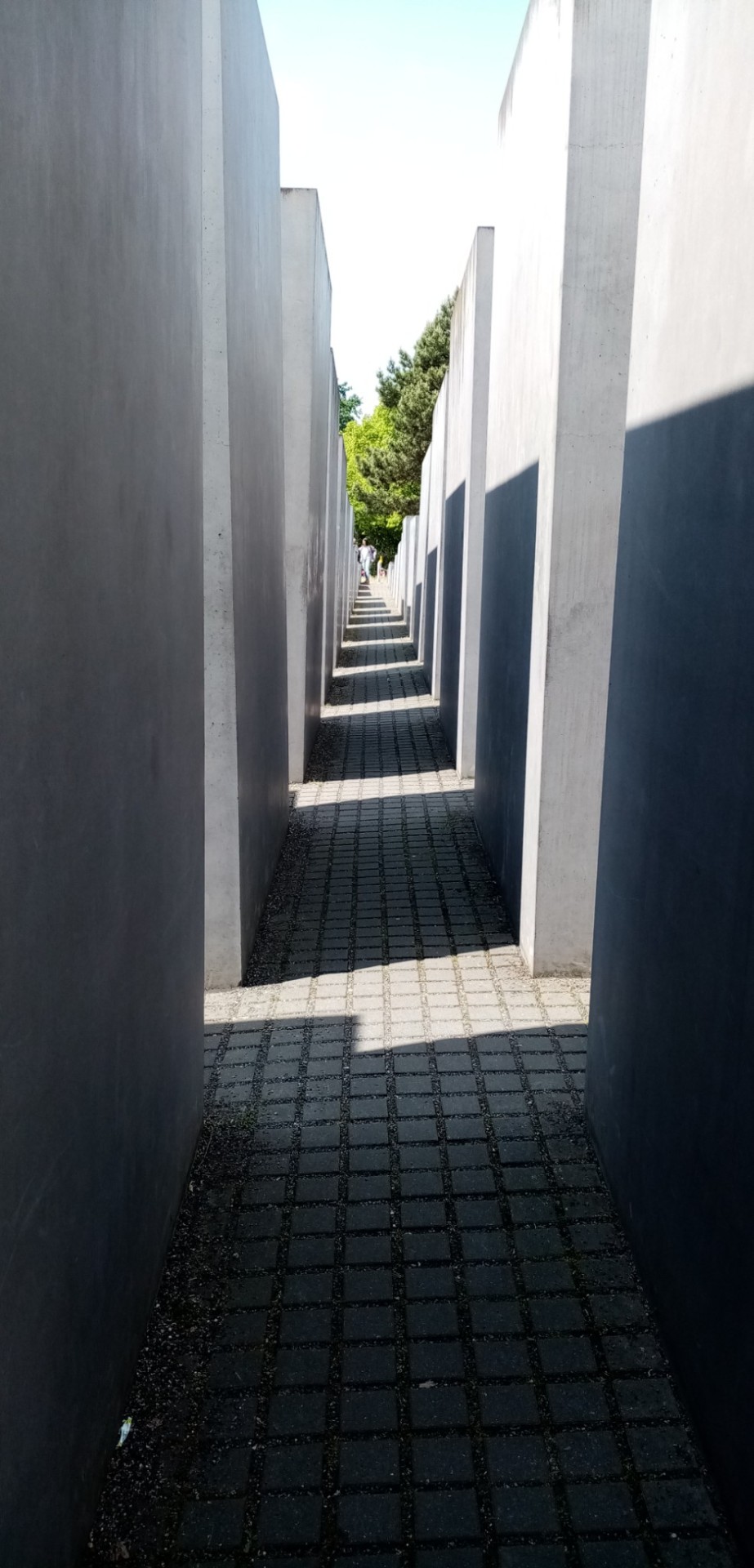


1 note
·
View note
Photo

0 notes
Text
The absolute irony and hypocrisy of Columbia protesters telling Jews to 'go back to Europe' when 1) in living memory Europe was profoundly unsafe for the Jews because 6 million of them were murdered in the Holocaust and their communities were destroyed (not to mention all the antisemitism that came before and after; they were never welcomed there or considered European) and 2) a significant portion of the US population are descendants of European settler colonists. I mean... You first. If you truly believe it is a viable solution to fix all the problems of settler colonialism, you should 'go back to Europe'. But you never say that about yourselves. Interesting. Funny how that works.
(Edited for clarity)
#antisemitism#these protests truly are now only about openly hating jews#while pretending to give a shit about palestinian lives#you all could recognize antisemitism back in 2017 in charlottesville#but now that it's coming from supposed leftists you all choose to ignore it#edited for clarity
348 notes
·
View notes
Text
80th Anniversary of the Warsaw Ghetto Uprising: "The World Has to Know That We Did Not Go Like Lambs to the Slaughter."
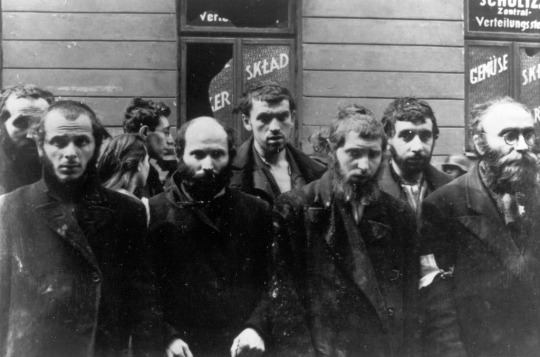


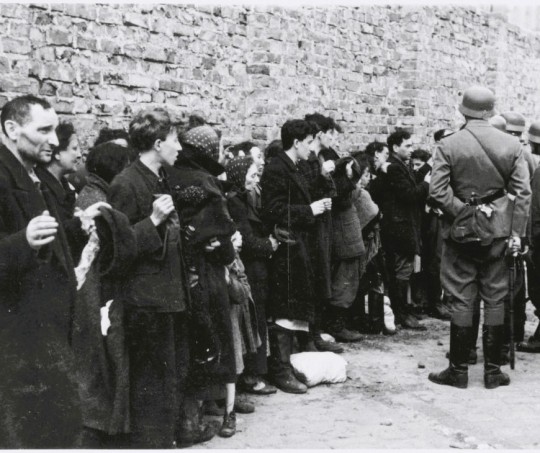
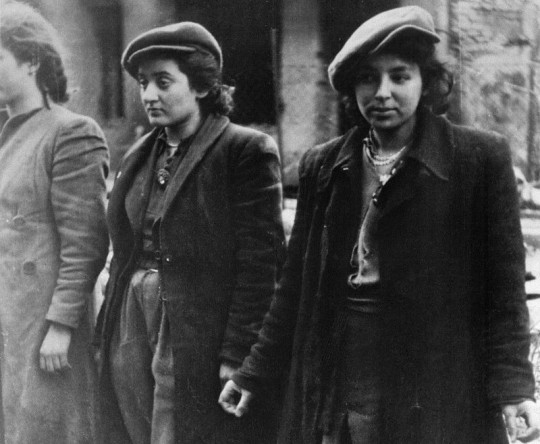
April 19th, 1943 - May 16th, 1943
Warsaw, Poland
“The question is not why all the Jews did not fight, but how so many of them did. Tormented, beaten, starved, where did they find the strength, spiritual and physical, to resist?” – Elie Wiesel
In the morning of April 19th, 1943, on what would be the first night of Passover, the Warsaw Ghetto Uprising began. German troops and SS entered the ghetto to deport its surviving inhabitants to the death camps.
In the summer of 1942, as Jews living in the Warsaw ghetto were deported to Treblinka, reports that made their way back quickly made it clear that "resettlement" meant mass-murder. In response to this, Jews citizens in the ghetto began forming organized resistance forces; the Jewish Combat Organization (ŻOB) and the Jewish Military Union (ŻZW).
Following the January 1943 success of a smaller-scale resistance preventing a deportation attempt, an act that led to the suspension of such deportation efforts by the Nazis, the residents began to secretly build subterranean tunnels and shelters in preparation for a full-scale uprising.
Throughout April rumours swirled of a final deportation of the ghetto's remaining Jews. On the 18th it became clear that German forces, reinforced with artillery and tanks, were moving in to carry out their final action. The alarm was raised, and residents retreated to their underground shelters. They would remain here for the duration of the uprising, refusing to surrender themselves to deportation.
A group of around 700 Jewish resistance fighters, made up of the ŻOB and ŻZW and led by 24-year-old Mordechai Anilevitch, joined together to stage what would be their final stand against the Nazis. These brave young people were malnourished and lacked proper military training, they were equipped with nothing but poor-quality or even homemade weapons and their bare hands.
By contrast German forces numbered 2000, they were well-equipped and well-trained and had advanced knowledge of the existence of these resistance groups.
Despite this stark imbalance, on the first day of the uprising the ragtag Jewish fighters met the invaders head on and successfully forced the Nazis to retreat outside the city walls.
Amongst all of the chaos and destruction all around them, the Jews hiding in the tunnels and bunkers gathered together to celebrate Passover with what little they had, breaking homecooked matzah and drinking illicitly obtained wine.
The Warsaw Ghetto Uprising held strong for a full 27 days, coming to an end on May 16th, 1943. Unable to gain a full advantage, the Germans had resorted to burning the Warsaw Ghetto to the ground in an attempt flush out those in hiding so they could be rounded up.
In the months following the official end of the uprising some Jews remained hiding out in the rubble, periodically attacking German police on patrol.
This was the largest uprising by Jews during World War II and the first significant urban revolt against German occupation in Europe. It inspired many more uprisings, especially amongst Jews in camps and Ghettos.
May Their Memories Be a Revolution
Learn More:
Warsaw Ghetto Uprising | Holocaust Encyclopedia
Holocaust Survivors Describe the Last Passover in the Warsaw Ghetto
Tuesday, Nissan 27, 5783 / April 18, 2023 - Jewish Calendar - On This Day
#jumblr#jewish#judaism#yom hashoah#holocaust remembrance day#the shoah#shoah#shoah remembrance day#holocaust#the holocaust#shoah mention#holocaust mention#antisemitism#antisemitism tw#tw antisemitism#jewish history#nazi tw#warsaw#warsaw ghetto#warsaw ghetto uprising#may their memories be a blessing#may their memories be a revolution#a few days early
2K notes
·
View notes
Note
(non-jew here) I just realized that Holocaust Remembrance Day is this Saturday and I'm not looking forward to the pro-hamas idiots trying to make it all about Palestine and attacking Jewish people for daring to mourn while they are "killing Palestinians" (ignoring that practically 99% of Jewish people have little to no control over Palestine but that doesn't matter to antisemites because because all Jews are responsible for what's going on in Gaza in their minds)
Hi Nonnie!
(I'm scheduling this to post on the aforementioned day)
Oh, trust me. The appropriation and inversion of the memory of the Holocaust, in order to use it as an attack against the right of Jews to self defence (which is basically the right of Jews to live) has to be one of the most vile things I've ever seen. It's a loss of shame and morals on a level I can't comprehend.
But in a way, it had to happen. Those who want a second genocide of the Jews HAVE to dismantle the biggest protection that Jews have today, which is the Jewish state. Now, Israel doesn't exist "thanks" to the Holocaust. It exists because Jews are native to Israel, and our religion and heritage have dictated never giving up on our homeland, and it exists "thanks" to the Nazis's failure during the Holocaust to eradicate every last single Jew. Israel exists in spite of the Holocaust. But the Holocaust DOES provide the ultimate proof of why the existence of a Jewish state, to shelter all Jews, is vital. So anyone who wants to destroy the Jewish state, must tackle that. And today's antisemites do that by applying "never again" to everyone other than the Jews. Never again is now. Never again means Jews have the right to defend themselves, and destroy an antisemitic, genocidal terrorist organization. Never again means supporting the war against Hamas' Nazi-compatible ideology.
TBH, this DARVO (Deny, Attack, Reverse Victim and Offender) inversion is reminiscent of Nazi rhetoric, too. In his Jan 30, 1939 speech, Hitler attacked any sympathy expressed for the plight of Jews, claimed that it's the Jews who are responsible for the upcoming war, and that despite that, Jews will be the ones to pay the price for it, through their extermination in Europe.
Applying "never again" to cases where no genocide is happening, while wielding this appropriation as a weapon to deprive Jews of their right to live, means it's happening again.

^ Holocaust survivors from Buchenwald on board of the Meteora in July 1945. As the Israeli port of Haifa came into view, they put on their prisoner pyjamas, held up this Israeli flag, and took this pic.
On International Holocaust Memorial Day 2024, I am going to remember the Holocaust survivors who were murdered on Oct 7. I am going to think of the Holocaust survivors who were kidnapped during this massacre. I am going to recall that so many survivors sought to build their families instead of questing for blood and vengeance, and then they had to watch their families attacked, abducted and butchered by Palestinian terrorists. I am going to honor the overwhelming majority of Holocaust survivors who were Zionist, the two thirds of survivors who chose to make their home in Israel after the end of WWII, those who had to fight British soldiers and Arab attackers in order to make that happen, and the survivors who made up roughly 65% of Israel's fighters in our War of Independence.
I am going to remind everyone, that there are survivors who experienced Oct 7 as a second Holocaust.

Never again IS NOW.
Sending big hugs! xoxox
(for all of my updates and ask replies regarding Israel, click here)
#israel#antisemitism#israeli#israel news#israel under attack#israel under fire#terrorism#anti terrorism#hamas#antisemitic#antisemites#jews#jew#judaism#jumblr#frumblr#jewish#israelunderattack#resources#holocaust
193 notes
·
View notes
Text
This commentary entitled “Europe Died in Auschwitz” was authored by Sebastián Vivar Rodriguez and first published on November 21, 2004, by the Spanish website Gentiuno, and then later, published in a Spanish newspaper. But no one by that name has been found to exist, so the author's name is likely a pseudonym.
""I walked down the streets in Barcelona and suddenly discovered a terrible truth: Europe died in Auschwitz.
We killed six million Jews and replaced them with 20 million Muslims. In Auschwitz we burned a group of people who represented culture, thought, creativity, talent. We destroyed the chosen people, truly chosen, because they produced great and wonderful people, who made great contributions to the world, and thus changed the world.
The contribution of today's Jewish people is felt in all areas of life: medicine, technology, international trade, science, the arts, and above all, as the conscience of the world.
Look at any donors' board at any symphony, art museum, theater, art gallery, science center, etc. You will see many Jewish surnames. These are the people who were burned. Of the 6,000,000 who died, how many would have grown up to be gifted musicians, doctors, artists, philanthropists?
And under the pretense of tolerance, and because we wanted to prove to ourselves that we were cured of the diseases of racism and bigotry, Europe opened our gates to 20 million Muslims, who brought us stupidity and ignorance, religious extremism and lack of tolerance, crime and poverty, due to an unwillingness to work and support their families with pride.
They have blown up our trains and turned our beautiful Spanish cities into the third world, drowning in filth and crime. Shut up in the apartments they receive free from the government, they plan the murder and destruction of their naive hosts.
And thus, in our misery, we have exchanged culture for fanatical hatred, creative skill for destructive skill, intelligence for backwardness and superstition. We have exchanged the pursuit of peace of the Jews of Europe and their talent for a better future for their children, their determined clinging to life because life is holy, for those who pursue death, for people consumed by the desire for death for themselves and others, for our children and theirs.
What a terrible mistake was made by miserable Europe.
Recently, the UK debated whether to remove The Holocaust from its school curriculum because it 'offends' the Muslim population, which claims it never occurred. It is not removed as yet. However, this is a frightening portent of the fear that is gripping the world and how easily each country is giving in to it.
It is now approximately seventy years after the Second World War in Europe ended. This e-mail is being sent as a memorial chain, in memory of the six million Jews, twenty million Russians, ten million Christians, and nineteen-hundred Catholic priests who were murdered, raped, burned, starved, beaten, experimented on, and humiliated.
Now, more than ever--with Iran, among others, claiming the Holocaust to be 'a myth'--it is imperative to make sure the world "never forgets."
This is intended to reach 400 million people. Be a link in the memorial chain, and help distribute this around the world.
How many years will it be before the attack on the World Trade Center 'NEVER HAPPENED' because it offends some MUSLIM in the United States?
Take a minute to forward, reboot, and pass it along. We must wake up the world before it's too late. ""
#secular-jew#israel#jewish#judaism#israeli#jerusalem#diaspora#secular jew#secularjew#islam#world war 2#world war ii#Holocaust#6 million#never again#Muslims#Islamists#Iran#Isis#Hamas#hezbollah#Islamic jihad
85 notes
·
View notes
Text
Anti-Zionism is still a tenet of faith for many ultra-orthodox Jews, who view the creation of the state as heretical before the Messiah’s return. In fact, the Agudath Israel World Organisation which had official pre-war recognition in the parliaments of Poland, Lithuania and Romania, actually petitioned the UN against recognising Israel in 1947.
Moreover, the largest secular Jewish party in swathes of pre-war eastern Europe was the Bund, a socialist and fiercely anti-Zionist party. On the eve of the Holocaust in 1938, it won 17 out of the 20 Warsaw city council seats taken by Jewish parties.
Most of these Jews – including members of my family – died in the Nazi genocide. Were they antisemites? Would this Congress not have made a distinction between them and the fascists who murdered them? Apparently not.
To please Tel Aviv and its backers in Washington, the 5 December Congress resolution spits on their memory and goes after their spiritual descendants, the thousands of anti-racist Jews who blockaded New York’s Grand Central station and the Manhattan bridge in solidarity with Palestinians in Gaza.
[...]
The tragic bad maths of the stripped-down equation that ‘anti-Zionism = antisemitism’ answers no questions posed by oppressed people. It is just applauded by pro-Israel lobbies in the US such as AIPAC and the Anti-Defamation League. The equation is banner-headlined in Israel by the Jerusalem Post, in the US by the Wall St Journal and, here, by the Spectator and Daily Telegraph. It turns reality on its head to label opposition to ethnic cleansing and apartheid as racism.
95 notes
·
View notes
Text

THURSDAY HERO:
Odoardo Focherini
Odoardo Focherini was an Italian journalist and devout Catholic who rescued 105 Jews between 1942 and 1944 by obtaining false identity papers for them and transporting them to safety in Switzerland. He was posthumously beatified by Pope Benedict XVI.
Odoardo, known as “Odo,” was born in Modena, Italy in 1907 to a devout Catholic family. At a vacation in Trento in 1925, he met Maria Marchesi, and they fell in love and soon became engaged. Odo was 18 and Maria was 16, so they waited until 1930 to get married. They had seven children.
Odo worked as an insurance agent, but in 1933 he followed his passion and started a new career as a journalist. He became managing director of L’Avvenire d’Italia, a daily newspaper affiliated with the Catholic Church that is still being published today. Odo was such an exceptional journalist that he came to the attention of the highest levels of the Catholic Church, and Pope Pius XI awarded him the Order of Saint Sylvester in 1937.
The situation in Europe grew increasingly darker for the Jews and in 1942, Hitler enacted the genocidal “Final Solution.” Cardinal Pietro Boetta, the archbishop of Genoa, asked the editor-in-chief of L’Avvenire d’Italia, Raimondo Manzini, to help a group of Polish Jews escape from fascist-ruled Italy to safety in Switzerland. Manzini immediately recruited Odo, known for his strong moral compass and devotion to justice, to carry out this lifesaving mission. Odo created a secret network of Catholics who wanted to help persecuted Jews as the Nazi death machine took over Europe. Using contacts he’d met during his work as a journalist, Odo procured a large number of false documents and personally accompanied many Jews over the border to Switzerland. Odo saved the lives of 105 Jews between 1942 and 1944.
Unfortunately, the Nazis found out what Odo was doing when they intercepted a letter in which he wrote that he was helping Jews “not for profit but out of pure Christian charity.” He was arrested by the Gestapo on March 11, 1944 and imprisoned in Bologna. That August Odo was transferred to a work camp in Germany. During his imprisonment Odo sent 166 letters to his beloved wife Maria. Later that year Odo was sent to a concentration camp in Hersbruck, Germany. He developed a leg infection which wasn’t treated and became gangrenous. On December 27, 1944, Odo died from the raging infection. His last words were, “I declare that I die in the purest Roman Catholic faith and in full submission to the will of God.”
Odo was posthumously awarded the title of Righteous Among the Nations by Israeli Holocaust Memorial Yad Vashem in 1969. In 1996, Pope John Paul II declared Odo a “Servant of God,” because he was murdered for saving Jews. This began the lengthy beatification process, and in 2012, the decree attesting to Focherini’s martyrdom was finally signed by Pope Benedict XVI. Odoardo Focherini was the first Righteous Gentile to be beatified. Odo’s letters to his family were published as a book in 1994. The Memorial Museum in Carpi displays a large banner with a quotation from Odo that he said to his brother-in-law who visited him in prison: “If you had seen, as I have seen in this prison, how Jews are treated here, your only regrets would be not to have saved more of them.”
For saving 105 Jews, at the cost of his own life, we honor Odoardo Focherini as this week’s Thursday Hero.
77 notes
·
View notes
Text
Denazification, truth and reconciliation, and the story of Germany's story
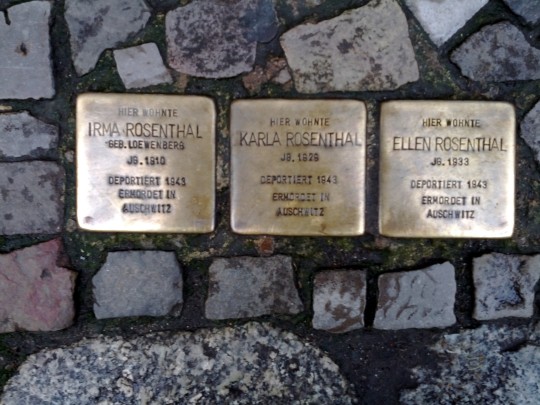
Germany is the “world champion in remembrance,” celebrated for its post-Holocaust policies of ensuring that every German never forgot what had been done in their names, and in holding themselves and future generations accountable for the Nazis’ crimes.
All my life, the Germans have been a counterexample to other nations, where the order of the day was to officially forget the sins that stained the land. “Least said, soonest mended,” was the Canadian and American approach to the genocide of First Nations people and the theft of their land. It was, famously, how America, especially the American south, dealt with the legacy of slavery and Jim Crow.
Silence begets forgetting, which begets revisionism. The founding crimes of our nations receded into the mists of time and acquired a gauzy, romantic veneer. Plantations — slave labor camps where work was obtained through torture, maiming and murder — were recast as the tragiromantic settings of Gone With the Wind. The deliberate extinction of indigenous peoples was revised as the “taming of the New World.” The American Civil War was retold as “The Lost Cause,” fought over states’ rights, not over the right of the ultra-wealthy to terrorize kidnapped Africans and their descendants into working to death.
This wasn’t how they did it in Germany. Nazi symbols and historical revisionism were banned (even the Berlin production of “The Producers” had to be performed without swastikas). The criminals were tried and executed. Every student learned what had been done. Cash reparations were paid — to Jews, and to the people whom the Nazis had conquered and brutalized. Having given in to ghastly barbarism on an terrifyingly industrial scale, the Germans had remade themselves with characteristic efficiency, rooting out the fascist rot and ensuring that it never took hold again.
But Germany’s storied reformation was always oversold. As neo-Nazi movements sprang up and organized political parties — like the far-right Alternative für Deutschland — fielded fascist candidates, they also took to the streets in violent mobs. Worse, top German security officials turned out to be allied with AfD:
https://www.wsws.org/en/articles/2018/08/04/germ-a04.html
Neofascists in Germany had fat bankrolls, thanks to generous, secret donations from some of the country’s wealthiest billionaires:
https://www.spiegel.de/international/germany/billionaire-backing-may-have-helped-launch-afd-a-1241029.html
And they broadened their reach by marrying their existing conspiratorial beliefs with Qanon, which made their numbers surge:
https://www.thedailybeast.com/how-fringe-groups-are-using-qanon-to-amplify-their-wild-messages
Today, the far right is surging around Europe, with the rot spreading from Hungary and Poland to Italy and France. In an interview with Jacobin’s David Broder, Tommaso Speccher a researcher based in Berlin, explores the failure of Germany’s storied memory:
https://jacobin.com/2023/07/germany-nazism-holocaust-federal-republic-memory-culture/
Speccher is at pains to remind us that Germany’s truth and reconciliation proceeded in fits and starts, and involved compromises that were seldom discussed, even though they left some of the Reich’s most vicious criminals untouched by any accountability for their crimes, and denied some victims any justice — or even an apology.
You may know that many queer people who were sent to Nazi concentration camps were immediately re-imprisoned after the camps were liberated. Both Nazi Germany and post-Nazi Germany made homosexuality a crime:
https://time.com/5953047/lgbtq-holocaust-stories/
But while there’s been some recent historical grappling with this jaw-dropping injustice, there’s been far less attention given to the plight of the communists, labor organizers, social democrats and other leftists whom the Nazis imprisoned and murdered. These political prisoners (and their survivors) struggled mightily to get the reparations they were due.
Not only was the process punitively complex, but it was administered by bureaucrats who had served in the Reich — the people who had sent them to the camps were in charge of deciding whether they were due compensation.
This is part of a wider pattern. The business-leaders who abetted the Reich through their firms — Siemens, BMW, Hugo Boss, IG Farben, Volkswagon — were largely spared any punishment for their role in the the Holocaust. Many got to keep the riches they acquired through their part on an act of genocide.
Meanwhile, historians grappling with the war through the “Historikerstreit” drew invidious comparisons between communism and fascism, equating the two ideologies and tacitly excusing the torture and killing of political prisoners (this tale is still told today — in America! My kid’s AP history course made this exact point last year).
The refusal to consider that extreme wealth, inequality, and the lust for profits — not blood — provided the Nazis with the budget, materiel and backing they needed to seize control in Germany is of a piece with the decision not to hold Germany’s Nazi-enabling plutocrats to account.
The impunity for business leaders who collaborated with the Nazis on exploiting slave labor is hard to believe. Take IG Farben, a company still doing a merry business today. Farben ran a rubber factory on Auschwitz slave labor, but its executives were frustrated by the delays occasioned by the daily 4.5m forced march from the death-camp to its factory:
https://pluralistic.net/2023/06/02/plunderers/#farben
So Farben built Monowitz, its own, private-sector concentration camp. IG Farben purchased 25,000 slaves from the Reich, among them as many children as possible (the Reich charged less for child slaves).
Even by the standards of Nazi death camps, Monowitz was a charnel house. Monowitz’s inmates were worked to death in just three months. The conditions were so brutal that the SS guards sent official complaints to Berlin. Among their complaints: Farben refused to fund extra hospital beds for the slaves who were beaten so badly they required immediate medical attention.
Farben broke the historical orthodoxy about slavery: until Monowitz, historians widely believed that enslavers would — at the very least — seek to maintain the health of their slaves, simply as a matter of economic efficiency. But the Reich’s rock-bottom rates for fresh slaves liberated Farben from the need to preserve their slaves’ ability to work. Instead, the slaves of Monowitz became disposable, and the bloodless logic of profit maximization dictated that more work could be attained at lower prices by working them to death over twelve short weeks.
Few of us know about Monowitz today, but in the last years of the war, it shocked the world. Joseph Borkin — a US antitrust lawyer who was sent to Germany after the war as part of the legal team overseeing the denazification program — wrote a seminal history of IG Farben, “The Crime and Punishment of I.G. Farben”:
https://www.scribd.com/document/517797736/The-Crime-and-Punishment-of-I-G-Farben
Borkin’s book was a bestseller, which enraged America’s business lobby. The book made the connection between Farben’s commercial strategies and the rise of the Reich (Farben helped manipulate global commodity prices in the runup to the war, which let the Reich fund its war preparations). He argued that big business constituted a danger to democracy and human rights, because its leaders would always sideline both in service to profits.
US companies like Standard Oil and Dow Chemicals poured resources into discrediting the book and smearing Borkin, forcing him into retirement and obscurity in 1945, the same year his publisher withdrew his book from stores.
When we speak of Germany’s denazification effort, it’s as a German program, but of course that’s not right. Denazification was initiated, designed and overseen by the war’s winners — in West Germany, that was the USA.
Those US prosecutors and bureaucrats wanted justice, but not too much of it. For them, denazification had to be balanced against anticommunism, and the imperatives of American business. Nazi war criminals must go on trial — but not if they were rocket scientists, especially not if the USSR might make use of them:
https://en.wikipedia.org/wiki/Wernher_von_Braun
Recall that in the USA, the bizarre epithet “premature antifascist” was used to condemn Americans who opposed Nazism (and fascism elsewhere in Europe) too soon, because these antifascists opposed the authoritarian politics of big business in America, too:
https://www.thenation.com/article/archive/premature-antifascist-and-proudly-so/
When 24 Farben executives were tried at Nuremberg for the slaughter at Monowitz, then argued that they had no choice but to pursue slave labor — it was their duty to their shareholders. The judges agreed: 19 of those executives walked.
Anticommunism hamstrung denazification. There was no question that German elites and its largest businesses were complicit in Nazi crimes — not mere suppliers, but active collaborators. Antifacism wasn’t formally integrated into the denazification framework until the 1980s with “constitutional patriotism,” which took until the 1990s to take firm root.
The requirement for a denazification program that didn’t condemn capitalism meant that there would always be holes in Germany’s truth and reconciliation process. The newly formed Federal Republic set aside Article 10 of the Nuremberg Charter, which would hold all members of the Nazi Party and SS responsible for their crimes. But Article 10 didn’t survive contact with the Federal Republic: immediately upon taking office, Konrad Adenauer suspended Article 10, sparing 10 million war criminals.
While those spared included many rank-and-file order-followers, it also included many of the Reich’s most notorious criminals. The Nazi judge who sent Erika von Brockdorff to her death for her leftist politics was given a judge’s pension after the war, and lived out his days in a luxurious mansion.
Not every Nazi was pensioned off — many continued to serve in the post-war West German government. Even as Willy Brandt was demonstrating historic remorse for Germany’s crimes, his foreign ministry was riddled with ex-Nazi bureaucrats who’d served in Hitler’s foreign ministry. We still remember Brandt’s brilliant 1973 UN speech on the Holocaust:
https://www.willy-brandt-biography.com/historical-sources/videos/speech-uno-new-york-1973/
But recollections of Brandt’s speech are seldom accompanied by historian Götz Aly’s observation that Brandt couldn’t have given that speech in Germany without serious blowback from the country’s still numerous and emboldened antisemites (Brandt donated his Nobel prize money to restore Venice’s Scuola Grande Tedesca synagogue, but ensured that this was kept secret until after his death).
All this to say that Germany’s reputation as “world champions of memory” is based on acts undertaken decades after the war. Some of Germany’s best-known Holocaust memorials are very recent, like the Wannsee Conference House (1992), the Memorial to the Murdered Jews of Europe (2005), and the Topography of Terror Museum in (2010).
Germany’s remembering includes an explicit act of forgetting — forgetting the role Germany’s business leaders and elites played in Hitler’s rise to power and the Nazi crimes that followed. For Speccher, the rise of neofacist movements in Germany can’t be separated from this selective memory, weighed down by anticommunist fervor.
And in East Germany, there was a different kind of incomplete rememberance. While the DDR’s historians and teachings emphasized the role of business in the rise of fascism, they excluded all the elements of Nazism rooted in bigotry: antisemitism, homophobia, sectarianism, and racism. For East German historians, Nazism wasn’t about these, it was solely “the ultimate end point of the history of capitalism.”
Neither is sufficient to prevent authoritarianism and repression, obviously. But the DDR is dust, and the anticommunism-tainted version of denazification is triumphant. Today, Europe’s wealthiest families and largest businesses are funneling vast sums into far-right “populist” parties that trade in antisemitic “Great Replacement” tropes and Holocaust denial:
https://corporateeurope.org/sites/default/files/2019-05/Europe%E2%80%99s%20two-faced%20authoritarian%20right%20FINAL_1.pdf
And Germany’s coddled aristocratic families and their wealthy benefactors — whose Nazi ties were quietly forgiven after the war — conspire to overthrow the government and install a far-right autocracy:
https://www.reuters.com/world/europe/25-suspected-members-german-far-right-group-arrested-raids-prosecutors-office-2022-12-07/
In recent years, I’ve spent a lot of time thinking about denazification. For all the flaws in Germany’s remembrance, it stands apart as one of the brightest lights in national reckonings with unforgivable crimes. Compare this with, say, Spain, where the remains of fascist dictator Francisco Franco were housed in a hero’s monument, amidst his victims’ bones, until 2019:
https://en.wikipedia.org/wiki/Pedro_S%C3%A1nchez#Domestic_policy
What do you do with the losers of a just war? “Least said soonest mended” was never a plausible answer, and has been a historical failure — as the fields of fluttering Confederate flags across the American south can attest (to say nothing of the failure of American de-ba’athification in Iraq):
https://en.wikipedia.org/wiki/De-Ba%27athification
But on the other hand, people who lose the war aren’t going to dig a hole, climb in and pull the dirt down on top of themselves. Just because I think Germany’s denazification was hobbled by the decision to lets its architects and perpetrators walk free, I don’t know that I would have supported prison for all ten million people captured by Article 10.
And it’s not clear that an explicit antifascism from the start would have patched the holes in German denazification. As Speccher points out, Italy’s postwar constitution was explicitly antifascist, the nation “steeped in institutional anti-fascism.” Postwar Italian governments included prominent resistance fighters who’d fought Mussolini and his brownshirts.
But in the 1990s, “the end of the First Republic” saw constitutional reforms that removed antifascism — reforms that preceded the rise of the corrupt authoritarian Silvio Berlusconi — and there’s a line from him to the neofascists in today’s ruling Italian coalition.
Is there any hope for creating a durable, democratic, anti-authoritarian state out of a world run by the descendants of plunderers and killers? Can any revolution — political, military or technological — hope to reckon with (let alone make peace with!) the people who have brought us to this terrifying juncture?

[Image ID: The Tor Books cover for ‘The Lost Cause,’ designed by Will Staehle, featuring the head of the snake on the Gadsen ‘Don’t Tread on Me’ flag, shedding a tear.]
Like I say, this is something I’ve spent a lot of time thinking about — not just how we might get out of this current mess, but how we’ll stay out of it. As is my wont, I’ve worked out my anxieties on the page. My next novel, The Lost Cause, comes out from Tor Books and Head of Zeus in November:
https://us.macmillan.com/books/9781250865939/the-lost-cause
Lost Cause is a post-GND utopian novel about a near-future world where the climate emergency is finally being treated with the seriousness and urgency it warrants. It’s a world wracked by fire, flood, scorching heat, mass extinctions and rolling refugee crises — but it’s also a world where we’re doing something about all this. It’s not an optimistic book, but it is a hopeful one. As Kim Stanley Robison says:
This book looks like our future and feels like our present — it’s an unforgettable vision of what could be. Even a partly good future will require wicked political battles and steadfast solidarity among those fighting for a better world, and here I lived it along with Brooks, Ana Lucía, Phuong, and their comrades in the struggle. Along with the rush of adrenaline I felt a solid surge of hope. May it go like this.
The Lost Cause is a hopeful book, but it’s also a worried one. The book is set during a counter-reformation, where an unholy alliance of seagoing anarcho-capitalist wreckers and white nationalist militias are trying to seize power, snatching defeat from the jaws of the fragile climate victory. It’s a book about the need for truth and reconciliation — and its limits.
As Bill McKibben says:
The first great YIMBY novel, this chronicle of mutual aid is politically perceptive, scientifically sound, and extraordinarily hopeful even amidst the smoke. Forget the Silicon Valley bros — these are the California techsters we need rebuilding our world, one solar panel and prefab insulated wall at a time.
We’re currently in the midst of a decidedly unjust war — the war to continue roasting the planet, a war waged in the name of continuing enrichment of the world’s already-obscenely-rich oligarchs. That war requires increasingly authoritarian measures, increasing violence and repression.
I believe we can win this war and secure a habitable planet for all of us — hell, I believe we can build a world of comfort and abundance out of its ashes, far better than this one:
https://tinyletter.com/metafoundry/letters/metafoundry-75-resilience-abundance-decentralization
But even if that world comes to being, there will be millions of people who hate it, a counter-revolution in waiting. These are our friends, our relatives, our neighbors. Figuring out how to make peace with them — and how to hold their most culpable, most powerful leaders to account — is a project that’s as important, and gigantic, and uncertain, as a just transition is.

Next weekend, I’ll be at San Diego Comic-Con:
Thu, Jul 20 16h: Signing, Tor Books booth #2802 (free advance copies of The Lost Cause— Nov 2023 — to the first 50 people!)
Fri, Jul 21 1030h: Wish They All Could be CA MCs, room 24ABC (panel)
Fri, Jul 21 12h: Signing, AA09
Sat, Jul 22 15h: The Worlds We Return To, room 23ABC (panel)

If you'd like an essay-formatted version of this thread to read or share, here's a link to it on pluralistic.net, my surveillance-free, ad-free, tracker-free blog:
https://pluralistic.net/2023/07/19/stolpersteine/#truth-and-reconciliation

[Image ID: Three 'stumbling stones' ('stolpersteine') set into the sidewalk in the Mitte, in Berlin; they memorialize Jews who lived nearby until they were deported to Auschwitz and murdered.]
#pluralistic#stolpersteine#historians' dispute#Historikerstreit#nazis#godwin's law#mussolini#berlusconi#italy#antifa#fascism#history#truth and reconciliation#the lost cause#denazification
246 notes
·
View notes
Text
"However, it is clear from reading Lozowick’s writing that the primary argument for retaining the Viennese materials in Israel rather than returning them to Central Europe is a conceptual one. Like the National Library lawyers argued over Kafka, Lozowick contended that the archives of Jewish Vienna belong in Israel because they are historical materials of the Jewish people and are therefore able to be claimed as the legal property of the Jewish state. Israel, according to Lozowick’s conceptual framework, is the cultural axis around which the entirety of the Jewish world rotates: “The transfer of the collection [from Vienna] to Israel was an ideological expression of the Viennese Jewish community accepting the centrality of the new Jewish state—otherwise it could have been transferred to London or New York... The founders of the archival world in Israel in the middle of the twentieth century regarded the state as the center of world documentation of the Jewish people.” Within this framework, Lozowick understands Israel to be the essential Jewish cultural hub, and as such, he is able to assert a legally viable claim of ownership over the historical materials produced elsewhere in the Jewish world. Such a sweeping argument has incalculable consequences for the status of property ownership and cultural production in the Jewish Diaspora, and Lozowick’s claim would be almost indefensible if he had not grounded it in the unique calamity of the Holocaust. In his decision, Lozowick asserts the following: “When [the Viennese archive] is in Jerusalem, it is part of Jewish heritage. Its expulsion from Jerusalem would send it to the periphery of the Jewish world. The leaders of the community after the Holocaust understood this well, so they sent their archives to the center so that their community would be remembered forever in the center.” As in the Kafka case, the historical memory of the Holocaust serves to justify Israel’s self-conceptualization as the center of the Jewish world. As Lozowick states, the role of Israel, particularly in an archival sense, is to keep the memory of the murdered Jews of Central and Eastern Europe alive in the modern Jewish state. This implicitly asserts that adequate Holocaust memorialization can only be achieved in the State of Israel, for the memory of the murdered Jews of Vienna would be memorialized far from the epicenter of Jewish cultural life if the archive were returned to Austria."
#i hate israel and both what they think of the diaspora and what theyve done to the diaspora 🙃#archives#mine
46 notes
·
View notes
Text
every single time i see some goober on instagram (or here on tumblr for that matter) demonizing jews and israel, all I want to ask is:
1) what is your opinion on indigenous rights?
2) are jews white?
3) have you read hamas’ founding document (their 1988 charter)?
because these really get to the root of their hypocrisy. these so-called leftists always claim to support indigenous rights and land back movements until it comes to jewish people, because they have a fundamental lack of understanding of jewish history, jewish ethnic and racial ancestry and identity, and the relationship between jews and that land. (also it shows how American-centric their worldview is that they see this conflict almost exclusively through an overly-simplistic lens of color, wherein they see jews as white/white europeans and palestinians as a generalized, vague group of people of color who are only ever victims instead of as a complex group of people with their own history, culture, and identity). and you KNOW they haven’t read the charter because they sincerely believe this is all solely about “liberation from oppression” and have no idea about the very real and very violent direct, explicit antisemitism that is the very basis for Hamas’ ideology. their original charter completely denies that jewish people originate from the very same land they claim to originate from; they say that they only way for the three abrahamic faiths to coexist peacefully is under islamic rule and regulation (which if you know literally anything about how jews and christians were treated under dhimmi status you’d know that they were treated as second class citizens at best); They directly cite this verse from the quran as justification for a holy war against the jews — "The Day of Judgement will not come about until Moslems fight the Jews (killing the Jews), when the Jew will hide behind stones and trees. The stones and trees will say O Moslems, O Abdulla, there is a Jew behind me, come and kill him.” (and don’t even get me started that the charter also explicitly states that women are valuable to the movement... but only “because they are makers of men” and because they stay home and rear the children.) I’ll concede that their 2017 revised charter states that they have “no problem with the Jews”, however this is moot when you can easily find video after video of young children saying explicitly that they want to kill Jews (yahood) and eradicate them from the land. these kids aren’t being taught to separate Jews and Israel/Zionism like Hamas leads people to believe (like they have convinced you westerners to believe); make no mistake, it’s not about cleansing the land of only "zionists", it is about eliminating all jewish people, denying their equal claim to the land, and denying their autonomy and right to self-determination.
i strongly, STRONGLY disagree with israel’s policies towards palestinians. i fucking hate Netanyahu, i hate his cronies, i hate that they court the far right in israel, i hate everything regarding how they have handled and continue to handle this entire conflict. and EVERY single other jew i know feels the same way. but jews have been stepped on and abused and slaughtered by their muslim/christian/pagan neighbors for literally thousands of years at this point. they were murdered en masse within living memory (and updated estimates put the death toll of the Holocaust at somewhere between 10-12 million, by the way. we are still finding mass graves in eastern europe all the time). jews deserve to govern themselves and live in their historical ancestral homeland. palestinians also deserve to live in peace and security, and israel has a responsibility to ensure that. but i will never ever support the complete erasure of the state of israel because i fundamentally believe in jewish sovereignty and indigenous rights, regardless of how much time they’ve been away, especially considering they were forced out and into a diaspora -- their leaving the land was not their choice. if the notion of jews standing up and making a space for themselves and ensuring their security upsets you, then perhaps the world should have actually treated them as human beings instead of slaughtering them. if we say that antisemitism is part of this conversation, and that the antisemitism should be condemned, and your first instinct is to either deny or deflect, you really need to examine your own antisemitism and how you have been thinking about this.
67 notes
·
View notes
Text

An Open Letter on the Misuse of Holocaust Memory, by Omer Bartov, Christopher R. Browning, Jane Caplan, Debórah Dwork, Michael Rothberg, et al., «The New York Review», November 20, 2023
«Appealing to the memory of the Holocaust obscures our understanding of the antisemitism Jews face today and dangerously misrepresents the causes of violence in Israel-Palestine.»
(Image: Berlin's Memorial to the Murdered Jews of Europe, August 28, 2015. Fotogoocom/Wikimedia Commons)
(Via: Laia Balcells)
#history#historiography#education#magazine#omer bartov#christopher r. browning#jane caplan#debórah dwork#michael rothberg#the new york review of books#2020s
31 notes
·
View notes
Text
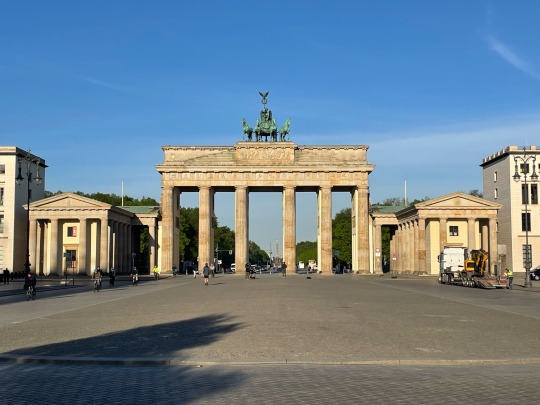
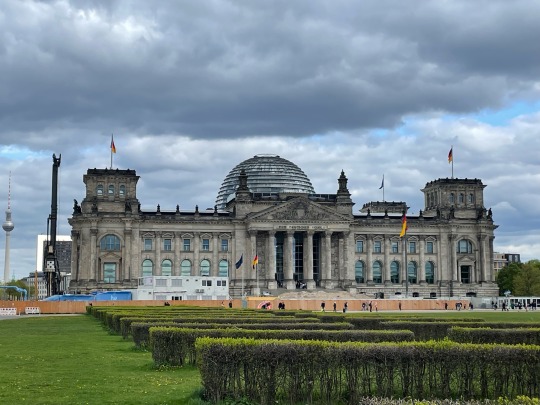


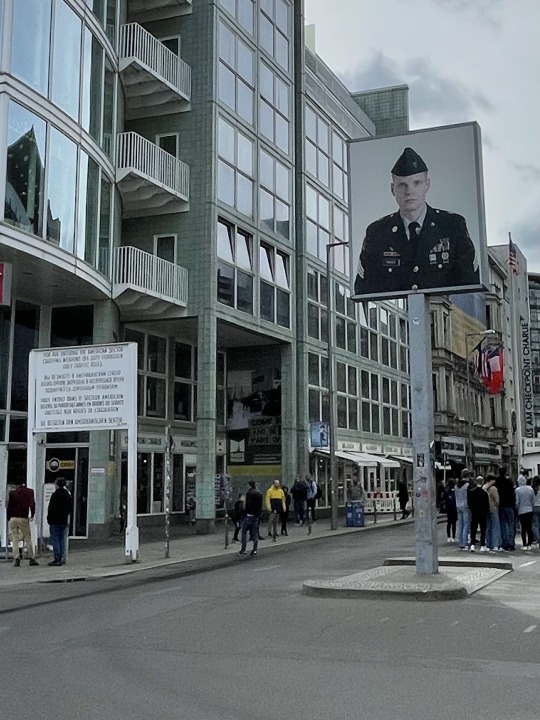

Back from our mini-break to Berlin 🇩🇪
Pics from the top: Brandenburg Gate, Reichstag building (the government building - we walked all the way to the top of that central glass dome on the roof), Victory Column, remnant of the Berlin Wall, Checkpoint Charlie, Memorial to the Murdered Jews of Europe
On day 1, we took a 6 hour guided bike tour around the city, which was totally the best way to see all the major sites as Berlin is quite a spread out city. We were away with five of our friends and we all absolutely loved this. It gave us a great overview and our guide told us lots of the history too. The photos show some of the places we saw.
On day 2, we started early and went up the dome of the Reichstag building and learnt about its history. Then we went to the Stasi museum and then the Stasi prison. Wow, I learnt so so much about life in East Berlin under Soviet rule. All those spy gadgets you read about in James Bond actually existed here, hidden cameras in ties and bags, listening devices planted in walls of rooms, members of your own family could be informing on you. The prison tour was so moving, many of the guides had been inmates there until as recently as 1989 when the prison closed down (I find it absolutely mind blowing that all this happened so recently). When the wall came down and East and West Germany reunified, all the prison staff, psychiatrists and doctors were granted immunity from prosecution so they went on to continue practising therapy and medicine for the general population, even though they had been involved in performing extreme psychological torture in the prison interrogation rooms. There were at least as many interrogation rooms than there were cells, so that tells you what went on day and night in that prison. The guides asked that we didn’t share photos of the prison on social media as they don’t want it glorified in any way.
On day 3, we went to the Topography of Terror, where we learnt more about the Nazi party, how they came into power and brought in their ideologies. Then we had to head to the airport to catch our flight home.
Berlin is a really fascinating city with so much history that it doesn’t shy away from but lays out for everyone to learn from.
17 notes
·
View notes
Text
How Anti-Semitic Rhetoric Became Mainstream
Using anti-Semitic rhetoric, society historically accused Jews of being rich oppressors as well as leeches. Jews were rulers as well as disloyal agitators. Jews, they opined, are members of an inferior race; now, they are members of a privileged one.
Contemporary Jew-haters have similarly evolved in their use of anti-Semitic rhetoric. They have transformed what were once the sentiments of the radical fringe into the accepted stance of our current woke moralists.
“Doublespeak” – the deliberate use of language to conceal or distort the truth, a concept made popular in George Orwell’s 1984 – is the main tool in the arsenal of today’s anti-Semites. Spouting the correct language, they have seamlessly transformed their expressions of unbridled, raw hatred into commendable academic jargon. Unfortunately, it is also pure anti-Semitic rhetoric.
“What is really important in the world of doublespeak is the ability to lie, whether knowingly or unconsciously, and to get away with it; and the ability to use lies and choose and shape facts selectively, blocking out those that don’t fit an agenda or program,” explains writer Edward S. Herman in his book Beyond Hypocrisy.
Phase I: “Zionism is Racism”

Post World War II, the anti-Semitic rhetoric shifted away from overtly anti-Jewish to a new concept, “anti-Zionist.” The murder of six million Jews in the Holocaust was a fresh memory. This made attacking Jews on the international stage less politically attractive.
While this didn’t stop powerful countries from closing their doors to Jewish refugees from Europe, it did change the discourse. Now, Jews were attacked by the declaration that “Zionism is racism.”
Where and how did this ruse begin? Not surprisingly, with the Soviets, world-class masters of doublespeak.
The USSR’s Campaign Against Israel
The 1917 revolutionary forces in the former USSR officially abolished the Czarists’ discriminatory policies against Jews. Yet, the reality of life for Jews under the Bolsheviks was one of state-enforced antisemitism and demonization.
Jews lived with quotas as well as outright rejection from universities. Many professions simply shut them out. When they did find employment, they faced glass ceilings, never able to progress to the highest levels.
Yet, surprisingly, when the state of Israel was created in 1948, “All international communist parties supported partition and the creation of a Jewish State,” documents Philip Mendes in Jews and the Left: The Rise and Fall of a Political Alliance.
This included as well the U.S. Communist Party which called Israel “an organic part of the world struggle for peace and democracy. The French communists viewed the Israelis in solidary with “resistance” fighters throughout the world.
Why Soviet Support Changed
Immediately after Israel’s 1948 victory in the War of Independence, “Zionism was … celebrated by the left as an organic movement of national return and a model for national liberation and decolonization movements throughout the world,” writes Alex Rychin in “Red Terror: How the Soviet Union Shaped the Modern Anti-Zionist Discourse.”
“Israel’s victory in its War of Independence and refusal to succumb to far mightier foes was positively awe-inspiring to adherents of political movements predicated on toppling structures of power,” explains Rychin.
Ironically, it was the communists who understood Zionism for what it actually is. Namely, the return of the Jewish people to their indigenous homeland (“Zion” being one of Israel’s biblical names). Historically, the Jewish people are the only people in existence who have had a continuous presence and a claim to the land in what is now the state of Israel.
However, communist support for the nascent state of Israel waned quickly, not due to ideology but to politics. By the time the modern state of Israel was created, the Cold War between Russia and the United States had already begun. The two superpowers pitted against each other, each vying for world dominance, including in the Middle East.
Israel's Support for Democracy
By the early 1950s, when it became apparent that Israel was espousing Western democratic values and supporting America, the Soviets realized they needed to significantly downgrade Israel, if not entirely ostracize it in the eyes of the world. That's where the anti-Semitic rhetoric came into play.
As a first step, the Soviets began spewing and exporting rabid anti-Semitic rhetoric. Specifically, they embarked on an intense and concentrated campaign against the “Zionists.” Part of this campaign was the infamous 1953 “Doctors Plot.” There, the Soviet government levied false charges against prominent Jewish doctors. They accused them of planning to murder leading government and communist party officials.
“The propaganda was highly compelling and steeped in long-established [anti-Semitic] themes of Jewish bloodthirstiness, greed, corruption, manipulation and cunning. It would contend that the very existence of a Jewish homeland was not only a plot of imperialism, but a mortal danger to the peace of the world,” writes Rychin.
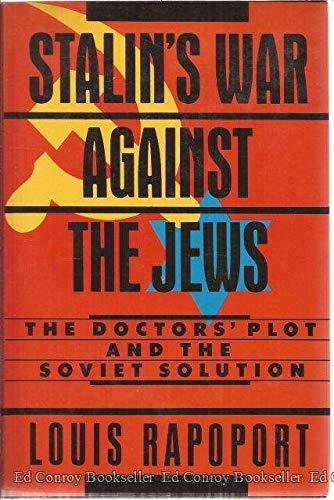
While Russia was busy introducing the term “anti-Zionist” into the global lexicon, most Americans were focused on the Vietnam War and the Civil Rights Movement. Yet Soviet-supporting professors at top American universities were paying close attention. In truth, anti-Semitism had never been in short supply at these universities. Most of them had Jewish quotas of their own.
The UN Ruse
At the UN, the Soviets began employing an audacious strategy using anti-Semitic rhetoric against Israel learned. Although the Nazis were their arch enemies, the Soviets learned from none other than Adolf Hitler. In his 1925 book Mein Kampf, Hitler praises the efficacy of using the psychological technique known as the “Big Lie”-- essentially promoting a lie so big that no one would believe that anyone "could have the impudence to distort the truth so infamously."
Rychin documents the fabrication of the “Big Lie” against Israel by the Soviets:
When a sub-commission of the United Nations was tasked with drafting a convention on the “elimination of all forms of racial discrimination,” the proceedings naturally focused on apartheid, neo-Nazism and antisemitism. But the Soviets viewed the reference to antisemitism as a direct rebuke to their anti-Jewish measures, and served up an amendment that “was almost a joke,” even to the Soviet delegation itself.
The amendment inserted Zionism into the listed forms of racism. According to sources close to the deliberations, the Soviets understood “full well that the idea that Zionism is racism is an indefensible position,” yet they floated it anyway, in part to turn the US-led initiative into farce, and in part perhaps, to see how far a “big lie,” could go.
Ultimately, the Convention was adopted with neither antisemitism nor Zionism referred to … But the seed had been planted.
On 10 November 1975, the General Assembly of the United Nations passed resolution 3379 on the “elimination of all forms of racial discrimination,” which determined that “Zionism is a form of racism and discrimination.”
The accusation stuck, and pro-Israel advocates are still fighting this absurd allegation.
Phase II: “Zionism is a settler-colonial white supremacist ideology”
Today, anti-Semites still use the “Zionism is racism” canard against Israel. But now, the anti-Semitic rhetoric comes with a litany of other “sins” – namely that Israel is a “settler-colonial white supremacist” state. In this context, its “racist” nature is simply a given.
What caused the switch in language? How does it benefit those who desire to bring down the only Jewish state in the world?
“Coalition of the Oppressed”
Most Americans viewed the election of Barack Obama as president of the United States as a watershed moment. Finally, the country thought, the era of post-racism had arrived. The fight for racial equality began with the freeing of the slaves. It was codified into law through the 1968 Civil Rights. Yet, it saw its ultimate expression in Obama’s election.
Most Americans thought that the era of post-racialism in America had finally arrived. Yet, Obama’s reaction to a number of pivotal moments in his presidency – the 2012 shooting of Trayvon Martin in Florida, the 2014 police shooting of Michael Brown in Ferguson, Missouri (an event that sparked the Black Lives Movement) and the 1915 death of Freddie Gray while in police custody in Baltimore – proved otherwise.
With racial tensions flaring, the Obama years constituted the perfect atmosphere for the divisive concept of critical race theory to break through the walls of academia and find its expression in the streets of America.
By the end of Obama’s second term as president, a Rasmussen poll found that 60 percent of American voters thought race relations in the United States had worsened since President Obama’s election. A similar New York Times/CBS poll taken at the same time found that nearly 70 percent of Americans thought race relations in America were bad. This represented a level unseen since the 1992 Rodney King riots.
Critical race theory’s charge that America is a “systemically racist” country was powerful. Yet, those in Obama’s camp who were forward thinking knew that this grievance alone would not be enough to sustain their power base over time. Obama also recognized the limitations of this charge.
Identity Politics and Anti-Semitic Rhetoric
It was thus during his second term that Obama embraced the concept of identity politics. He began to push the idea of a “coalition of the oppressed.” The coalition included blacks, women (feminists), Hispanics, Muslims, indigenous and other “brown” people as well as those identifying as gay, lesbian, trans and a myriad of other emerging sexual identities – essentially all those granted victim status due to their oppression by the “Establishment.”
Jews were noticeably and pointedly not included.
In the 1960s, the “Establishment” was loosely defined as the structures of societal authority. By the early 21st century, those reviving the concept had a much more specific definition of their oppressors. Namely, “white supremacist colonial powers.” Those powers specifically included Jews, Zionists and Israelis, all of whom were now identified as white, European interlopers on land indigenous to “Palestinians” (a term previously used in common English to identify anyone living in British Mandate Palestine, Jews and Arabs alike).
Despite Sharia law’s treatment of gays, women and minorities, the coalition welcomed Islamist organizations. It did the same for radical Palestinian organizations, rebranding their violent tactics and support for terror conveniently as “resistance.”
Many of these organizations, such as Students for Justice in Palestine (SJP), had already enjoyed victim status on college campuses. This was due to the successful mainstreaming of the “Zionism is racism” mantra, classic anti-Semitic rhetoric.
"Points of Unity"
When Nerdeen Kiswani, co-founder and former chair of New York City SJP (NYC SJP), began the radical Palestinian group Within Our Lifetime (WOL), it was with this broader “coalition of the oppressed” in mind. On a page titled “Points of Unity, “ WOL’s website reads,
“We are anti-Zionists. Zionism is a settler-colonial white supremacist ideology built on the genocide and dispossession of the Palestinian people.”
On the same page, WOL pledges its allegiance to
“all oppressed nationality people in the United States and around the world to engage in all forms of struggle in pursuit of freedom.”
One of WOL’s goals is to “Globalize the Intifada,” a strategy they employ to tie all “liberation” of “colonized and oppressed people” to persecution by the Jews – in WOL’s words, to “break free from the genocidal grip of U.S. imperialism and Zionism.”
Neveen Ayesh: A Case Study
Ayesh is a millennial Palestinian-American activist working as the government relations coordinator for the Missouri branch of American Muslims for Palestine, an extremist anti-Israel organization with links to terror groups and terror financiers. The Anti-Defamation League has accused AMP of “provid[ing] a platform for anti-Semitism.”
She was active on Twitter between 2011-2017 when she was between 18- to 24-years old. There, she openly and unabashedly expressed her vitriolic hatred of Jews and spewed anti-Semitic rhetoric. A sample of her rage from that period includes the following tweets:
“#crimesworthyoftherope being a Jew" ( August 4, 2011)
“I want to set Israel on fire with my own hands & watch it burn to ashes along with every Israeli in it. Call it what you want to call it idc" (February 17, 2014)
“I should join al-Qassam [Hamas’ terrorist wing]. Be the first female to join their group lololol #IdLoveToThough." (August 2, 2014)
Ayesh is now a political ally of Congresswoman Cori Bush (D-MO) and co-hosted a fundraiser for her. She also has political aspirations of her own and has toned down her anti-Semitic rhetoric.
Re-branding Anti-Semitic Rhetoric
Canary Mission recently called out Bush for her relationship with Ayesh (whose antisemitism was widely known). In an attempt at damage control, Ayesh responded with a long tweet thread, essentially excusing her antisemitism by re-branding it in the “language of the oppressed.”
After acknowledging that she had said “horrible things” about Jews and assuring us that she is really “not that person,” she blamed her hatred on the “chaos” she claims is part of the Palestinian experience.
“Chaos,” she says, “that no one seemed to - and still does not - care about because we’re brown. Muslims and Christian’s alike but we’re brown and Palestinian Arab.”
Ayesh says that after moving to the United States and going to college, she “learned how to assign academic terminology to what I had witnessed, experienced, & continue to experience at home & abroad. I became able to speak from an analytical and informative aspect rather than an emotional one of rage …”
Namely, what Ayesh learned was how to use anti-Semitic rhetoric effectively. Now, she labels Israel a “settler-colonialist white supremacy” entity. From this perspective, it then becomes legitimate to advocate for Israel’s total destruction.
Agendas Over Facts
Increasingly, agendas are more important to our populace than facts. This makes language a powerful tool in the arsenal of anti-Semites. It is particularly dangerous when used by radical groups like the New York-based Within Our Lifetime (WOL). These groups have successfully used venomous rhetoric to inspire physical attacks on Jews.
Last year, WOL activists sent Jews in New York to hospitals through their violent attacks. The group’s aggressive campaigns have been linked to the dramatic increase of attacks on Jews in the wider New York population.
Through equally anti-Semitic and venomous rhetoric, campus groups like Students for Justice in Palestine have successfully created atmospheres at U.S. universities where Jews are not only pushed out of student leadership positions but where Jewish students at large no longer feel safe on campus.
Like their Soviet predecessors, today’s anti-Semites rely on the “Big Lie” to sell their wares. Unfortunately, they are being sold to increasingly uneducated and gullible consumers.
28 notes
·
View notes